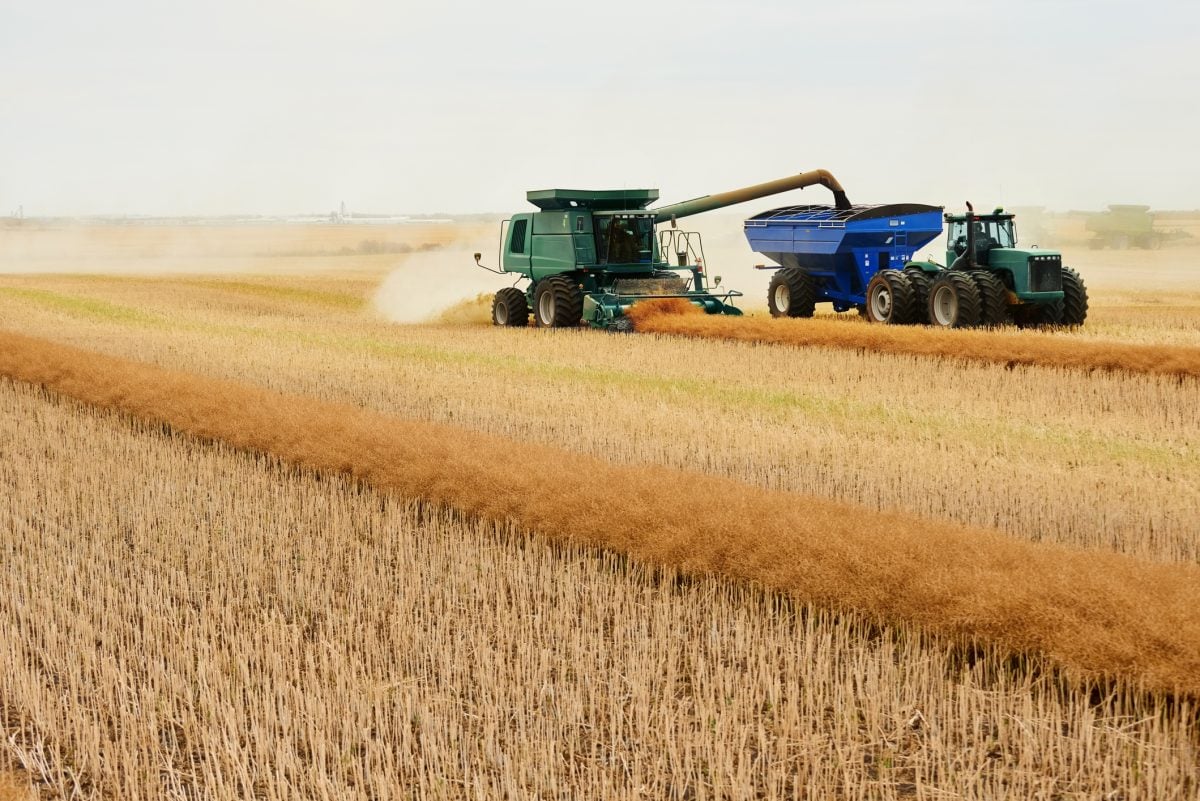Canola futures took an ugly kicking Tuesday, falling 34 cents per bushel as weekend rains in the U.S. Midwest and anxieties about demand destruction caused a retreat from soybeans in Chicago.
The weakness in the Chicago grains complex was in marked contrast to the general strength in other commodity classes and the moderately positive day in the world’s stock markets.
Winnipeg ICE November canola fell $15.60 per tonne to $602.40 and January fell $15.00 to $606.10.
Neither canola-specific supply nor demand factors were behind the special weakness in canola. Soybean prices fell in Chicago on Monday, a holiday in Canada, so Tuesday’s selloff in Winnipeg combined the weakness of both Monday and Tuesday.
Read Also

Canadian Canola Growers await info on Advance Payments Program changes
The Canadian Canola Growers Association says it’s waiting on more information from the federal government before it can double farmers’ access to interest-free canola advance payments.
The rains across the U.S. Midwest were not nearly enough to end the drought there, but they took some of the immediate pressure off the soybean crop, which still has time to recover and yield well. A few more rains in coming days would substantially rebuild the American soybean potential, hence the selloff in soybeans. Corn, which is long past its yield setting stage, can be only slightly helped by the rains, but it won’t suffer nearly as much damage as soybeans still can if conditions get worse.
Canola has lagged soybeans’ rally, but it tends to take any losses that occur to soybean prices. This is not so much due to the large size of the coming Canadian crop as it is due to the general weakness of world vegetable oil prices. Soybeans are in short supply, but not vegetable oil, and canola is heavily dependent on vegetable oil prices for its value.
The losses in Chicago soybean values spooked many, even though the losses were far from the limit, because they breached some technical support levels and undermined the view that soybeans will be the firmest of the crops for the rest of the summer because of the terribly short supplies of the crop.
American buyers are rumoured to be purchasing both South American soybeans and corn to make up for high U.S. prices and scarce supplies.
Most traders expect trade in the big three grains to be restrained and choppy until Friday, as everyone awaits the August U.S. Department of Agriculture WASDE reports. Any surprises in those reports could rock the market, but until then many traders are drawing back.















